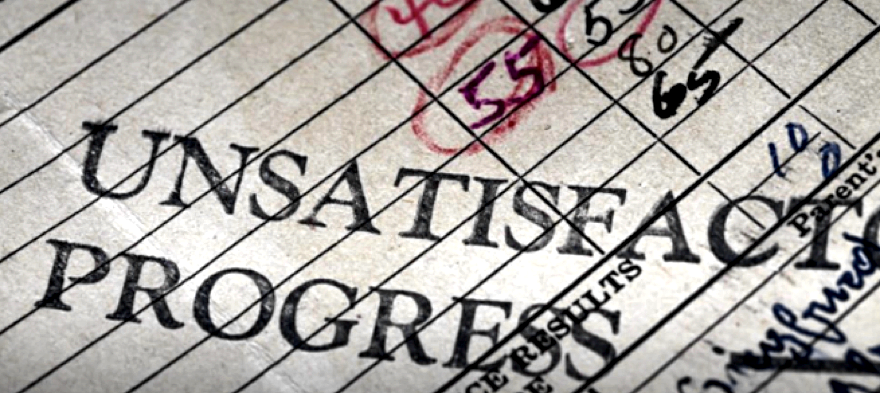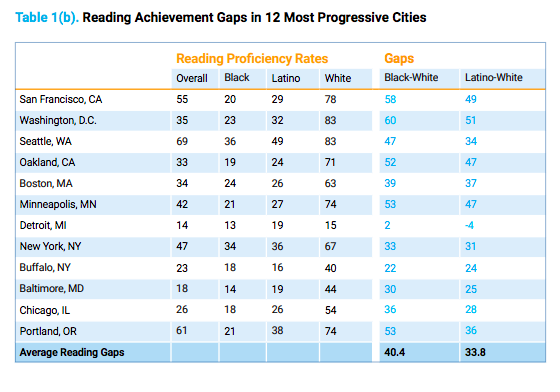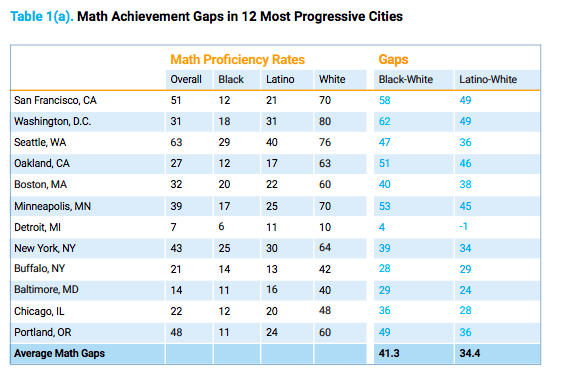
Nov 13, 2020 12:00:00 AM
by Alina Adams
The National Assessment for Education Progress (NAEP)—nicknamed “America’s Report Card”—released their 12th grade scores at the end of October.
The horrifying results: Just 37% of 12th-graders reached or exceeded the academic preparedness benchmarks for both math and reading that would qualify them for entry-level college courses. (Ed. note: They are being overly generous. While 37% is the correct number for high-school seniors proficient in reading, the number for those proficient in math is closer to 25%.)
The excuses began immediately:
Excuse #1: This year’s 12th graders missed a good chunk of learning time in 11th grade due to COVID-19. Of course, their senior year scores would suffer!
“I think the gap that we are experiencing is a result of a disruptive fourth quarter of last year, compounded by the summer regression, compounded by a level of disengaged students in the first quarter of this year,” said Alberto Carvalho, superintendent of Miami-Dade County Public Schools in Miami, Florida. (In March 2018, Carvalho backed out of accepting the job of New York City Schools Chancellor, leading to Richard Carranza hurriedly being installed, instead.)
Problem with that #1: Remember how we were told that online learning in the spring was “rigorous” and “robust” and just as good as in-person learning? (Even as parents begged to differ. Emphatically.)
Problem with that #2: The test results may have been released in 2020, but they were administered January through March 2019, over a year before COVID-19 closed schools in the United States.
Problem with that #3: This isn’t an aberrant dip. This year’s reading scores are lower than they were in 1992, and stagnant since 2002.
Excuse #2: In 2010, Diane Ravitch wrote:
The public does not realize that NAEP is a sampling test, and it is not given to every student. They also don’t realize that no student takes the entire test, only a portion of it. The seniors may not know that they are part of a national sample, but they know that this test will not affect their grades, their likelihood of graduating, or their plans after high school … And that’s why we should ignore the 12th grade NAEP scores. Unlike the SAT, the ACT, the end-of-course exams, the AP exams, and graduation exams, the NAEP tests don’t matter. And seniors know it. They doodle on their test papers, or they select answers with a pattern, like all B, or all C, or ABCD/ABCD. Or they leave questions blank, without even bothering to make a guess. The government should stop wasting money on this test in this grade, and the usual critics should turn their fire elsewhere.
Problem with that: A blog post in 2019 countered:
I know that twelfth graders are a perennial problem. Unlike students in fourth and eighth grades, the seniors know the test doesn’t count. They are not motivated. Bearing that in mind, it is nonetheless surprising that the recently released NAEP 12th grade reading and math scores have barely budged since 2005. Even if kids aren’t trying hard, their scores should have gone up if they were actually better educated.
Who wrote that blog post?
So, yeah. What she said.
Excuse #3: As Chalkbeat spun it, “One optimistic explanation: America’s rising high school graduation rate. Because fewer students are dropping out, the latest NAEP tests likely include scores from lower-performing students who in past years might not have been in school at all. The country’s overall graduation rate increased from 83 to 85% between 2015 and 2018, the most recent year with federal data available ... It’s a good thing—these students who would normally not be in the assessment are now in the assessment … Some of what we see here is probably safely attributable to improvements in graduation rates.”
Problem with that: So it’s good news that a larger number of kids are entering higher learning not prepared to do the work?
It’s good news that “the gap between the highest- and lowest-performing 12th graders is widening?” Or that “in both reading and math, gaps between the highest and lowest performers have grown since 2013. While the top performing group held steady or slightly improved, the lowest performers lost ground.”
Back in 2017, when writing about the pitfalls of Governor Andrew Cuomo’s “free” college plan, I cautioned that:
We’re talking about college, when, according to NYC itself, over half our high-school graduates are not college-ready. Those who do end up attending require remedial classes. So K-12 is not getting the job done. If they know there are “FREE” remedial classes waiting, what’s going to motivate high-schools to adequately prepare kids? They can just guiltlessly pass them along to a glorified “High-School Plus.”
How is that good news, on either a national or a local level?
Finally, this past Martin Luther King Day, I highlighted a report entitled, The Secret Shame: How America’s Most Progressive Cities Betray Their Commitment to Educational Opportunity For All.
According to the report, in NYC, there is a 39-point achievement gap between Black and white students and a 49-point achievement gap between Latino and white students in math, and a 33-point achievement gap between Black and white students and a 31-point achievement gap between Latino and white students in reading.
The obvious culprit, poverty, doesn’t explain these discrepancies, as the report asserts: In cities with higher percentages of middle- to upper-income black families, you might expect to see narrower gaps between white and Black students … (W)e found that the gaps between lower-income Black and white students were often about the same as the gaps between upper-income white and Black students …
Brightbeam’s analysis proves that the horrific education gaps exposed by NAEP testing isn’t “somebody else’s problem.” It’s NYC’s problem, too. And this isn’t unique to NYC. As the brightbeam report outlines, the biggest achievement gaps exist in the country’s most progressive cities.


As I stressed only two weeks ago when urging you to Vote Local when it comes to education, this isn’t an issue that’s up to Betsy DeVos to fix. (Or, at least, we shouldn’t count on the federal government, no matter who is in charge). This is an issue that falls to Governor Cuomo and Mayor De Blasio to fix in NYC (and to governors and mayors in every city with such appalling disparities.)
Which means it’s up to us.
Alina Adams is a New York City mom of three school-age children and a New York Times best-selling author of soap-opera tie-ins, figure-skating mysteries and romance novels. She is a contributing writer to TODAY Show Parenting, Mommy Poppins, BlogHer, Red Tricycle, Café Mom and Kveller. After going through the New York City school application process with her own children and realizing just how convoluted, Draconian and needlessly complex it was, Alina resolved to help make all parents aware of all their school choices—and how to get them—via her books, “Getting Into NYC Kindergarten” and “Getting Into NYC High-School,” as well as her podcast, “NYC School Secrets: Parents Helping Parents.”
The story you tell yourself about your own math ability tends to become true. This isn’t some Oprah aphorism about attracting what you want from the universe. Well, I guess it kind of is, but...
If you have a child with disabilities, you’re not alone: According to the latest data, over 7 million American schoolchildren — 14% of all students ages 3-21 — are classified as eligible for special...
The fight for educational equity has never been just about schools. The real North Star for this work is providing opportunities for each child to thrive into adulthood. This means that our advocacy...
Your donations support the voices who challenge decision makers to provide the learning opportunities all children need to thrive.
Ed Post is the flagship website platform of brightbeam, a 501(c3) network of education activists and influencers demanding a better education and a brighter future for every child.
© 2020–2024 brightbeam. All rights reserved.
Leave a Comment